
In 1924, only Liberal deputies participated in the country’s Parliament due to the abstention of the anti-Venizelist party from the 1923 elections. Nevertheless, the political situation in the country was not characterized by stability. The year began with a government of Stylianos Gonatas, in January the government of Eleftherios Venizelos took over, but it proved to be short-lived due to the disagreements over the “state issue”. The new government of the country was that of Georgios Kafantaris which was maintained until March to be succeeded by the government of Alexandros Papanastasiou. Internal friction led to the resignation of the Prime Minister and the “government of the summer holidays” with Themistocles Sofoulis as Prime Minister took over. The next prime minister, and the last for 1924, was Andreas Michalopoulos.
The country had to deal with political instability, but that was not the most important problem. Just a few months after the signing of the Treaty of Lausanne and the compulsory exchange of populations between Greece and Turkey, thousands of refugees were living in refugee camps in emerging new districts.
However, as is always the case, next to the big daily issues, people are looking for opportunities for temporary respite. Carnival has always been such a time, a chance for people to step out of their identities, to have fun, to dress up. Through the pages of the newspapers Vradini and Ethnos of 1924, the bourgeois way of celebrating Carnival is captured in the pages of the newspapers. The editor of Vradini observes that the dance movement of the year is not at all small, but ‘the dancing vitality, the dancing enthusiasm are those things which are missing from this year’s Carnival’. An indication, perhaps, that life in 1924 is tentatively trying to get back to normal.
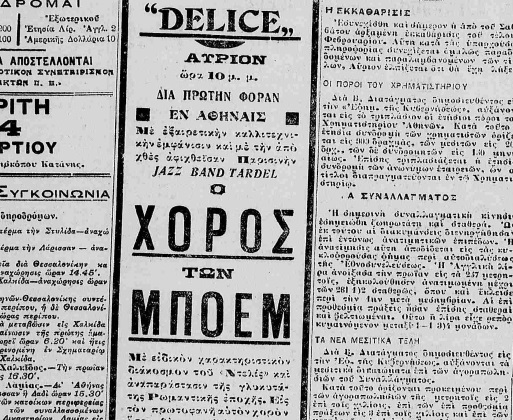
The last and most prominent Carnival (of Tyrofagos), exactly a century ago today, was on 9 March. As early as 1906 the most important Carnival event was the Journalists’ Union Ball which, together with the “Journalists’ Lottery”, was a major source of income for the Journalists’ Association. Traditionally, the Ball was held on the last Sunday of Carnival. Until 1910 the Ball was held at the Municipal Theatre of Athens and was only postponed during war periods. In 1924 the event was to be hosted by the Olympion Theatre. The magnificent decoration of the venue was undertaken by set designer Ioannis Abelas and was inspired by the palaces of the Pharaohs.
In March 1924 the Journalists’ Association, which had been founded in 1921 to include journalists who did not belong to the Union, was still active. Within the year, however, the Association was dissolved and its members joined the Union. The Association also prepared its own Ball on Thursday 6 March at the Theatre Kentrikon. The advertisement stressed that the attire for the ball would be “formal or luxurious disguise”. Admission was ticketed, but box seats were also auctioned off a few days before the event. The Theatre Kentrikon was on Kolokotronis Street and had hosted many great performances during its years of operation.
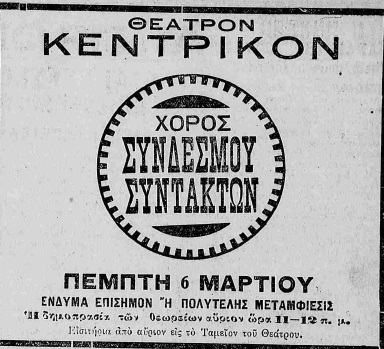
Apart from the unions of the Journalists, of course, there were many other associations that organized balls on the days of Carnival, obviously with the aim of strengthening their funds. The pages of the newspapers mention the Authors’ Ball at the “Delis” and the Ball of the Constitutional Greek Women also at the Κentrikon. According to the article ‘the dance (of the Constitutional Greek Women) will be from both a lifestyle and stylistic point of view something extremely beautiful, warm and moving’. This is because members of the Constitutional Youth will help in its organization. This organization had been founded in 1924 by retired Royalist officers, with anti-Venizelism as its main characteristic.
However, on the occasion of Carnival, many more hotels, breweries, cafes in the centre of Athens and in the outskirts opened dance halls and organized balls. Among them are the two balls at the restaurant “Averoff” in Stadiou Street opposite the Parliament where the participants will participate in “confetti war – egg war – flower war” and enjoy “Soup – Bar”.
Another ball that stands out is the Ball of the bohemians. Its title sets the tone for the costume. Attendees are advised to wear “simple and so typical costumes of the Bohemian era”. The music for the ball would be provided by the Parisian Jazz Band Tardel. Jazz was a musical genre that had made a strong appearance in Athens in the 1920s and appealed mainly to the elite who wanted to stay away from the musical sounds that the refugees brought with them. A similar role was played by the many dance schools that operated in Athens teaching western dances. The most popular dance of Carnival 1924 was the foxtrot, “the beautiful, simple and rhythmic dance” that has “mesmerized the Athenians”.

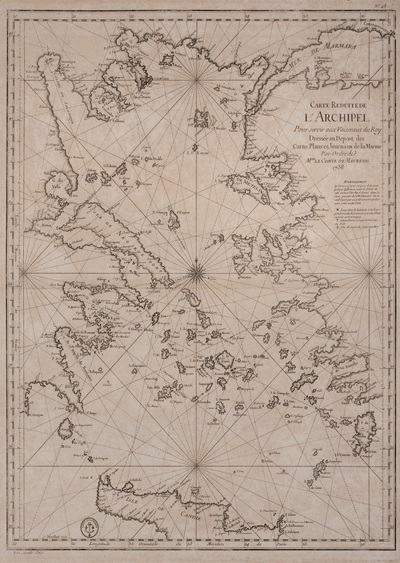

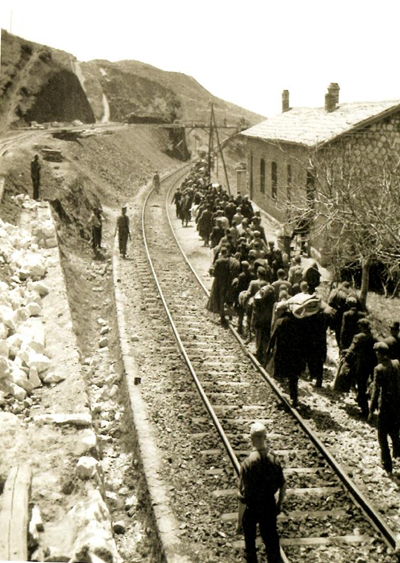
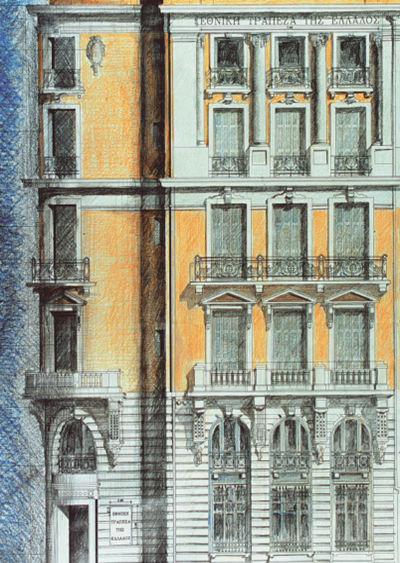


Leave A Comment